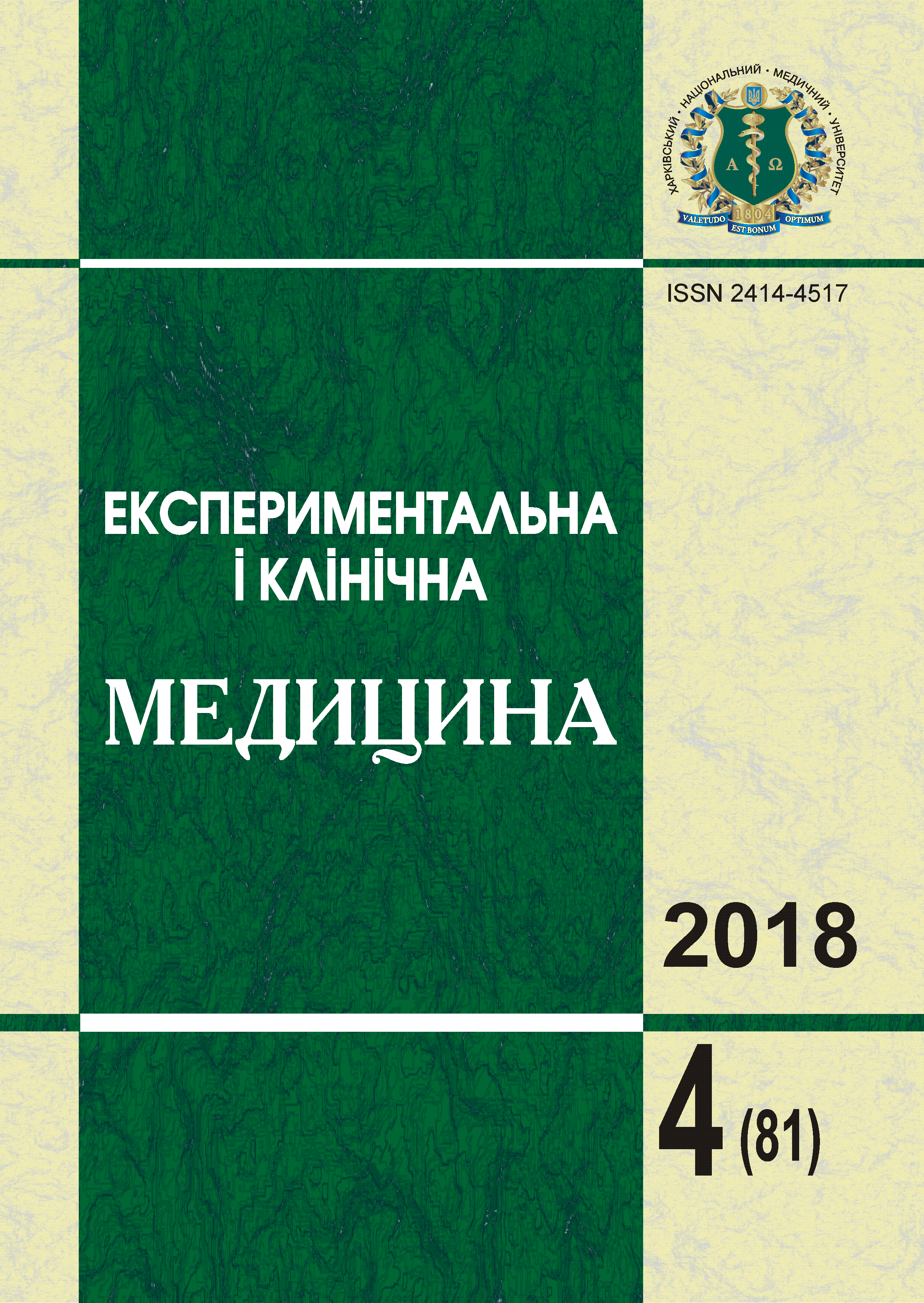Abstract
The level of dna fragmentation of the endometrium and follicular fluid in tuboperitoneal infertility The study is devoted to investigation of apoptosis in the reproductive tract of women with tuboperitoneal infertility. The results of the study showed impaired apoptosis in the endometrium and follicular fluid, and connection with oxidative stress. The level of DNA fragmentation can be considered as an additional prognostic marker of pregnancy, which will improve the effectiveness of infertility treatment.References
Yamanova M.V., Salmina A.B. (2009). Endokrinnoie besplodiie: kletochnaia i molekuliarnaia patolohiia implantatsii [Endocrine infertility: cellular and molecular pathology of implantation]. Moskow: Medika, 200 s. [in Russian].
Szmidt M., Sysa P., Niemiec T., Urbańska K., Bartyzel B. (2010). Regulation of apoptosis in endometrium preparation for menstruation or embryo implantation. Ginekol. Pol., vol. 81 (11), pp. 856–859.
Liu J., Li Y. (2010, Sept.). Effect of oxidative stress and apoptosis in granulosa cells on the outcome of IVF-ET. Zhong Nan Da Xue Xue Bao Yi Xue Ban, vol. 35 (9), pp. 990–994.
Feldmann G., Benifla J.L., Madelenat P. (2006). Apoptosis of granulose cells as a predictive marker of in vitro fertilization success? Gynecol. Obstet. Fertil., vol. 34 (7–8), pp. 547–582.
Karuputhula N.B., Chattopadhyay R., Chakravarty B., Chaudhury K. (2013). Oxidative status in granulosa cells of infertile women undergoing IVF. Systems Biology in Reproductive Medicine, vol. 59 (2), pp. 91–98.
Gubskiy Yu.I. (2015). Smert kletki: svobodnyie radikaly, nekroz, apoptoz: monohrafíia [Cell death: free radicals, necrosis, apoptosis: monograph]. Vinnitsa: Nova Kniha, 360 p. [in Russian].
Sinha K., Das J., Pal P.B., Sil P.C. (2013). Oxidative stress: the mitochondria-dependent and mitochondria-independent pathways of apoptosis. Archives of Toxicology, vol. 87 (7), pp. 1157–1180.
Agarwal A., Gupta S., Sharma R.K. (2005). Role of oxidative stress in female reproduction. Reprod. Biol. Endocrinol, vol. 3, p. 28.
Orlova V.V. (2018). Vyvchennia stanu pro/antyoksydantnoii systemy v reproduktyvnomu trakti zhinok z trubno-perytonealnym bezpliddiam [Study of the state of the anti-oxidant system in the reproductive tract of women with tubal-peritoneal infertility]. Medytsyna sohodni i zavtra – Medicine today and tomorrow, № 1, p. 72 [in Ukrainian].
Antsiferova Yu., Sotnikova N., Bogatova I., Boitsova A. (2014). Changes of apoptosis regulation in the endometrium of infertile women with tubal factor and endometriosis undergoing in vitro fertilization treatment. JBRA Assisted Reproduction, vol. 18 (1), pp. 2–6.

